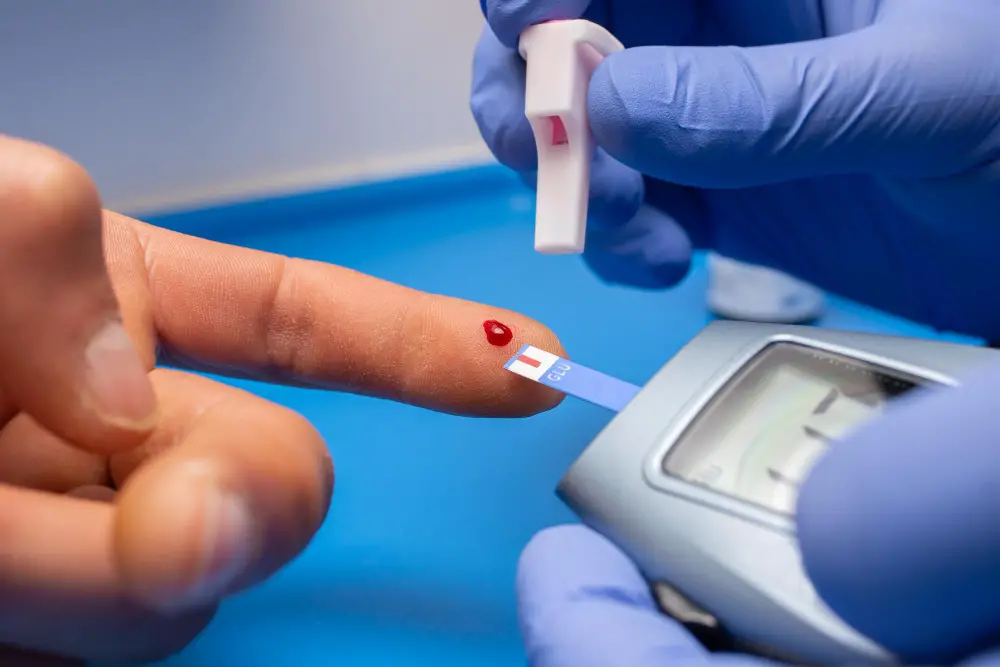
All about Heart Attacks in Dialysis Patients
-
- Dr. Junaid Arshad
- December 18, 2021
- 0 comments
Table of Contents
Introduction
Cardiovascular diseases including heart attack are extremely common in dialysis patients and affect almost 60% of these patients.
The annual mortality rate due to heart diseases in dialysis patients is nearly 14% which is 10-20 folds greater than the population of similar age and gender.
In the United States, Australia, & New Zealand, heart disease is the primary cause of death in 40 out every 100 dialysis patients.
Does Dialysis Cause a Heart Attack?
Dialysis, the procedure itself increases the risk of a heart attack in patients with end-stage renal disease but probably a single session leading to a heart attack is very rare. Instead, the repeated sessions further add to the risk factors in an already predisposed patient & can cause death by heart disease in the form of heart attack, sudden cardiac death, & heart failure.
Heart attack in dialysis patients is less often a cause of death as compared to cardiac arrhythmias and cardiac arrest.
The 2020 Annual Data Report of the United States Renal Data System (USRDS) has given the statistics as below:
The data from 2018 showed that 40% of deaths in dialysis patients were due to heart disease and out of that 40% only 8% were secondary to heart attack and 85% were due to arrhythmia and cardiac arrest.
Difference between heat attack and cardiac arrest
Heart Attack refers to damage to the heart muscle due to reduced blood supply. Blood vessels supplying the heart get blocked either by cholesterol deposits or a blood clot that results in the complete cessation of blood supply to a particular region of the heart & when it persists above a certain time period it may cause permanent damage to the myocardium.
In contrast, cardiac arrest is the sudden cessation of the electrical activity of the heart.
This results in a complete loss of heart contractility & sudden death if not immediately treated.
Cardiac arrest may occur secondary to a heart attack.
A patient may survive a heart attack even without any treatment but cardiac arrest always results in death unless immediately treated.
6 Causes of Heart Attack in dialysis patients
Chronic Volume Overload
Volume overload is very common in dialysis patients and is an independent factor that adds to cardiac causes of mortality both by heart attack and heart failure.
It increases the workload on the heart and can result in heart attack by demand-supply mismatch (type-2 MI).
The reason for chronic volume overload is decreased urine output and inadequacy of dialysis.
Raised Uric Acid levels
The association of uric acid levels with heart disease in dialysis patients is less clear.
A few studies have suggested that increased uric acid levels are associated with increased cardiac events and hence an increased death rate due to heart disease.
Whereas a few studies have yielded opposite results, showing favorable outcomes of raised uric acid levels on cardiovascular outcomes.
More research is required to reach the final conclusion.
Raised Homocystenine levels
This is one of the very important factors contributing to heart disease in dialysis patients.
Homocysteine is an amino acid that interacts with folic acid & vitamin B12 to regulate the methionine cycle.
Any abnormality in this pathway causes the accumulation of homocysteine which is responsible for calcification & atherothrombosis in the vascular system, ultimately resulting in narrowing in the blood vessels of the heart leading to heart attacks.
Raised homocysteine levels are seen in 85-100% of patients with ESRD & therefore is an independent factor predicting the risk of heart attacks.
Supplementation with folic acid can lower the homocysteine levels & may help reduce the risk of heart disease in these patients.
Chronic inflammation—oxidative stress, endotoxaemia and uraemic toxins
Oxidative Stress
Patients with ESRD have increased oxidative stress that contributes to increased incidence and death rate due to heart disease.
These patients probably have an imbalance between antioxidants and pro-oxidants which is responsible for oxidative stress. The end result is chronic inflammation, endothelial dysfunction, & enhanced atherosclerosis, all increasing the risk of a heart attack.
The mechanism by which hemodialysis causes oxidative stress is the inactivation of nitric oxide synthase by reactive oxygen species.
Studies have shown that the administration of antioxidants like N-acetylcysteine & vitamin E may reduce the risk of heart disease in these patients. Although, the data supporting this fact is inadequate and more studies are needed.
Endotoxaemia
Ednotaxaemia means the presence of endotoxins in the blood.
Endotoxins are the components of the cell wall of gram-negative bacteria and are made up of complex polysaccharides.
These endotoxins are responsible for chronic inflammation in patients with ESRD. Other conditions that raise endotoxins in the blood include heart failure & sepsis.
Dialysis contributes to endotoxemia and chronic inflammation by the following 3 mechanisms.
- Bacterial contamination of dilysate, dialysis catheters, & circuitry (both haemodialysis & peritoneal dialysis)
- Dysfunction of peritoneal membrane
- Bacterial translocation of gastrointestinal tract
The chronic inflammatory process itself contributes to atherosclerosis and increases the risk & incidence of heart attacks.
Uraemic toxins
Uraemic toxins are one of the prime culprits responsible for a long list of complications in ESRD patients.
Two of the uraemic toxins i.e. indoxyl sulfate (IS) and p-cresyl sulfate (PCS) cause chronic inflammation and increase the risk of heart attacks.
Their increased levels in the blood are not due to dialysis but due to decreased excretion by the kidneys.
In fact, the most probable reason is the inability of dialysis to remove these uraemic toxins completely from the blood.
Disorders of mineral metabolism
Dialysis patients are given calcium supplements usually as phosphate binders for the treatment of raised phosphate levels. This may result in excessive calcium intake and in turn, increased calcium-phosphate product.
The end result is calcification in the blood vessels of the heart which increases the risk f heart attacks.
Increased Prevalence of traditional Risk Factors
Increased Incidene of traditional risk factors
One of the key factors for the increased risk of heart disease including heart attacks in dialysis patients is the increased incidence of traditional risk factors for coronary artery disease (CAD).
Although, these traditional risk factors account for less than 50% of the total risk and the remainder is attributed to the nontraditional risk factors mentioned above and are secondary to decreased renal function & the dialysis procedure itself.
Traditional risk factors include diabetes which is present in 54% of the dialysis population.
Other risk factors include low HDL cholesterol (present in 33%), hypertension ( present in 96 percent), left ventricular hypertrophy by electrocardiographic criteria (present in 22 percent), low physical activity ( present in 80 percent), & old age.
Can a patient undergo dialysis after a heart attack?
Yes, dialysis can be done after a heart attack. Heart Attack is not a contraindication for dialysis. Although dialysis can add to the risk factor for heart attack and cardiovascular mortality but its benefits in a patient with End-Stage Renal Disease (ESRD) are way more than its risk & in certain situations, it is a life-saving treatment modality.
How to prevent heart disease in dialysis patients
The following points may help reduce the risk of heart disease in dialysis patients.
- Adequate control of blood sugar level, blood pressure, & lipid levels.
- Maintaining ideal body weight.
- Regularly monitoring of haemoglobin levels & treating it accorrdingly.
- Striclty minotring & maintaining serum electrolytes particularly Potassium.
- Maintaining fluid balance by limiting fluid intake accoridng to urine output and avoiding fluid overload.
- Regular dialysis sessions.
- Maintaining serum calcium and phosphate in the required limits.




